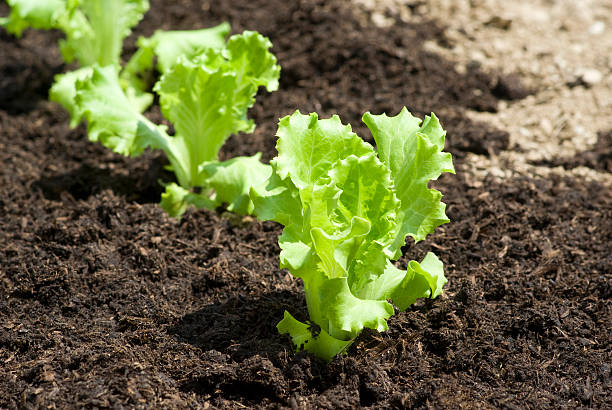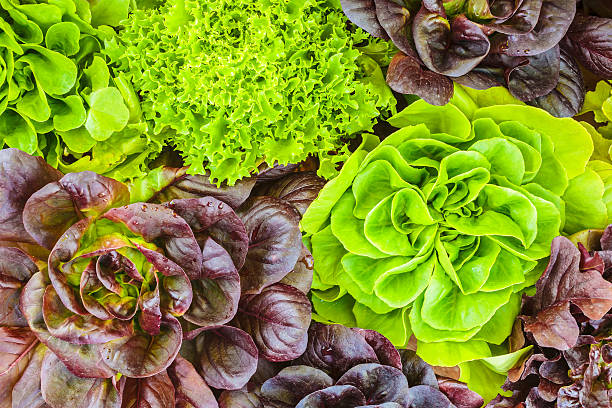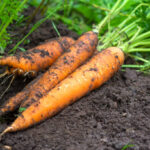
Welcome to our comprehensive guide on growing lettuce! If you’re looking to enhance your gardening skills and enjoy the superior taste and nutritional benefits of homegrown lettuce, you’ve come to the right place. In this article, we’ll provide you with valuable insights, tips, and step-by-step instructions on how to successfully plant, grow, and harvest lettuce in your garden. Get ready to embark on a journey that will not only elevate your culinary experiences but also add a touch of freshness to your meals.
Why Grow Lettuce?
Lettuce is a cool-season crop that thrives in the spring and fall, making it an excellent choice for gardeners of all levels, including beginners. Not only is lettuce easy to grow from seeds directly in the soil, but it also matures quickly, allowing for staggered plantings and continuous harvests. Whether you have a large garden or limited space, lettuce is versatile enough to be grown in raised beds, containers, or even on decks, patios, balconies, and porches.
The Planting Process

To ensure a successful lettuce harvest, it’s important to pay attention to the planting process. Let’s dive into the key factors you need to consider:
Sun Exposure and Soil Requirements
Lettuce prefers a location with 5 to 6 hours of sunlight per day, although it can benefit from afternoon shade in hot temperatures. When it comes to soil, lettuce thrives in loose, well-draining soil with a slightly acidic to neutral pH. Before planting, it’s recommended to amend the soil with plenty of compost to enhance fertility.
Ideal Planting Time
For optimal growth, lettuce seeds should be sown when soil temperatures range between 45°F and 65°F (7°C and 18°C). Cold-adapted varieties can tolerate even lower temperatures. Direct sowing is the preferred method, and you should aim to plant the seeds in the ground 2 to 4 weeks before the last spring frost date or as soon as the ground is workable. Alternatively, you can start seeds indoors about one month before the last spring frost date and then harden off the seedlings for three days to a week before transplanting them outdoors. If you opt to buy transplants, they can be planted between 2 weeks before and two weeks after the last spring frost.
Planting Techniques
To ensure successful germination, it’s crucial to prepare a well-tilled seedbed that is free from stones and large clods of dirt. Lettuce seeds are tiny and require exposure to light to germinate, so be mindful not to sow them too deep.
Plant the seeds 1/8 to 1/4 of an inch deep in either single rows or through broadcast seeding for wider row planting. Depending on the lettuce variety, thin the seedlings to the appropriate spacing: 4 inches apart for loose-leaf lettuce, 8 inches apart for romaine (cos) and butterhead (loose-head, Bibb, Boston) lettuce, and 16 inches apart for crisphead (iceberg) lettuce. Set rows of lettuce 12 to 15 inches apart for optimal growth. For a continuous harvest, sow additional seeds every 2 weeks.
Companion Planting and Watering
To naturally control aphids, consider planting rows of chives or garlic between your lettuce. These aromatic plants act as “barrier plants” for lettuce and deter aphid infestations. Adequate watering is essential for lettuce growth, so remember to water thoroughly at the time of transplanting or seeding.
Lettuce will indicate when it needs water by wilting, so pay close attention to its leaves. Using a mist nozzle for watering and applying water during the heat of the day can help cool the plants and slow down transpiration. Utilizing row covers is another effective way to prevent lettuce from drying out under direct sunlight.
Nurturing Healthy Growth

Once your lettuce seeds have sprouted and you’ve established healthy plants, it’s important to continue nurturing their growth. Here are some essential care tips to follow:
Protection from Cold and Pests
During the early stages of the growing season, you can provide extra protection for your lettuce transplants by creating temporary cloches using bottomless milk cartons or plastic bottles. These structures will shield the young seedlings from cold temperatures and help them acclimatize. Additionally, using row covers or fleece can offer further protection against the elements.
Fertilization and Moisture Control
Approximately three weeks after transplanting, it’s recommended to fertilize your lettuce plants with an organic alfalfa meal or another slow-release fertilizer. This will ensure a steady stream of nitrogen, promoting healthy growth. To maintain optimal moisture levels, be sure to water your lettuce regularly, but avoid overwatering, as it can lead to disease and soft growth. Well-draining soil is essential to prevent waterlogged conditions. Applying organic mulch around the plants will help conserve moisture, suppress weed growth, and maintain cooler soil temperatures during warmer months.
Weeding and Bolting Prevention
Regular weeding is necessary to protect your lettuce plants from competing with invasive weeds. Be cautious while weeding to avoid damaging the shallow roots of lettuce. To prevent bolting, which occurs when lettuce plants produce a central stem and seed stalk, take measures to control the factors that trigger this process.
Shielding plants with a shade cloth can filter the light and delay bolting. Additionally, strategic garden planning, such as planting lettuce in the shade of taller plants like tomatoes or sweet corn, can reduce bolting during hot summer months. Another option for cold-climate gardeners is utilizing cold frames to extend the growing season and protect lettuce from frost.
Harvesting and Storage Techniques

The time for harvesting your lettuce has finally arrived! Here’s what you need to know to ensure a bountiful harvest and proper storage:
Harvesting Tips
Harvest lettuce in the morning when the leaves are full-sized, young, and tender. Regularly check your garden for leaves that are ready to be harvested, as mature lettuce can quickly become bitter and woody. For leaf lettuce varieties, remove the outer leaves while allowing the center leaves to continue growing.
Butterhead, romaine, and loose-leaf lettuce can be harvested by removing the outer leaves, digging up the entire plant, or cutting it about an inch above the soil surface. In many cases, a second harvest is possible using these methods. Crisphead lettuce should be picked when the center is firm and fully developed.
Proper Storage
To extend the shelf life of your harvested lettuce, store it in a loose plastic bag and place it in the refrigerator. This method can keep your lettuce fresh for up to 10 days. When you’re ready to use the lettuce, immerse it in cold water for a few minutes to rejuvenate the leaves. Then, use a salad spinner or towel to remove excess water. In case your lettuce leaves have wilted, you can revive them by soaking them in a bowl of cold water with ice cubes for approximately 15 minutes.
Conclusion
Congratulations on completing our comprehensive guide on growing lettuce! We hope this article has equipped you with the knowledge and confidence to embark on a successful lettuce-growing journey. Remember to adapt the planting and care techniques to your climate and gardening conditions. Following the steps outlined in this guide will reward you with a bountiful harvest of fresh, homegrown lettuce that will elevate your culinary experiences and provide you with a rich source of essential nutrients. Happy gardening, and enjoy the delicious rewards of your labor!






